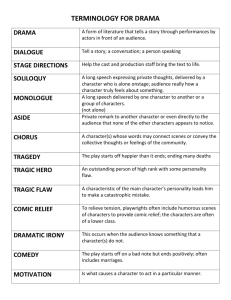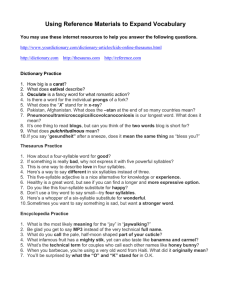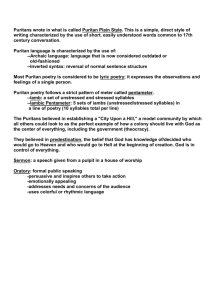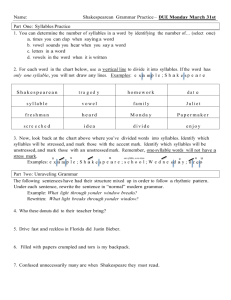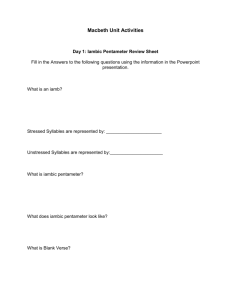Poetry Terms By Ace
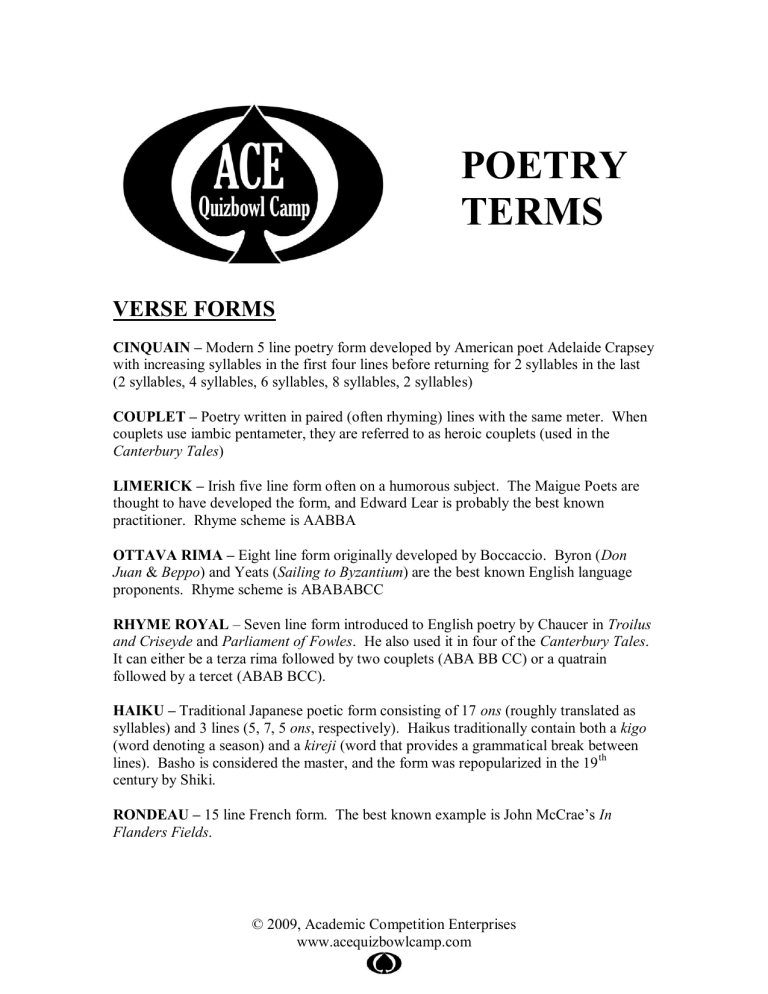
POETRY
TERMS
VERSE FORMS
CINQUAIN – Modern 5 line poetry form developed by American poet Adelaide Crapsey with increasing syllables in the first four lines before returning for 2 syllables in the last
(2 syllables, 4 syllables, 6 syllables, 8 syllables, 2 syllables)
COUPLET – Poetry written in paired (often rhyming) lines with the same meter. When couplets use iambic pentameter, they are referred to as heroic couplets (used in the
Canterbury Tales )
LIMERICK – Irish five line form often on a humorous subject. The Maigue Poets are thought to have developed the form, and Edward Lear is probably the best known practitioner. Rhyme scheme is AABBA
OTTAVA RIMA – Eight line form originally developed by Boccaccio. Byron ( Don
Juan & Beppo ) and Yeats ( Sailing to Byzantium ) are the best known English language proponents. Rhyme scheme is ABABABCC
RHYME ROYAL – Seven line form introduced to English poetry by Chaucer in Troilus and Criseyde and Parliament of Fowles . He also used it in four of the Canterbury Tales .
It can either be a terza rima followed by two couplets (ABA BB CC) or a quatrain followed by a tercet (ABAB BCC).
HAIKU – Traditional Japanese poetic form consisting of 17 ons (roughly translated as syllables) and 3 lines (5, 7, 5 ons , respectively). Haikus traditionally contain both a kigo
(word denoting a season) and a kireji (word that provides a grammatical break between lines). Basho is considered the master, and the form was repopularized in the 19 th century by Shiki.
RONDEAU – 15 line French form. The best known example is John McCrae’s In
Flanders Fields .
© 2009, Academic Competition Enterprises www.acequizbowlcamp.com
Page 2 of 2
SESTINA – 39 line poetry form consisting of six six-line stanzas followed by a tercet (3 line stanza). The same six words (in different orders) end each line of the six-line stanzas.
SPENSERIAN STANZA – Nine line form invented by Spenser for his The Faerie
Queen . It consists of eight lines of iambic pentameter followed by one Alexandrine (12 syllable) line of iambic hexameter. Byron later used it in
Childe Harold’s Pilgrimage
, and Keats used it in The Eve of St. Agnes .
TERZA RIMA – Form that uses three line interlocking stanzas of the form ABA BCB
CDC DED, etc. There is no limit to the number of stanzas in a terza rima poem. Dante invented the form for his Divine Comedy .
VILLANELLE – Nineteen line French form invented by the French poet Jean Passerat.
Dyan Thomas used the form for his Do Not Go Gentle into That Good Night and James
Joyce’s fictional Stephen Dedalus used it several times in The Portrait of the Artist as a
Young Man . It consists of five tercets and a concluding quatrain.
METER
Meter is defined by the arrangement of stressed and unstressed syllables within a line and the length of the line in feet (a foot is a combination of stressed & unstressed syllables). Thus, a line with five iambic feet is known as iambic pentameter.
DACTYL –
ANAPEST -
TROCHEE -
IAMB -
PYRRHIC -
SPONDEE -
MONOMETER -
DIMETER -
TRIMETER -
TETRAMETER -
PENTAMETER -
HEXAMETER -
SUU
UUS
SU
US
UU
SS
1 Foot
2 Feet
3 Feet
4 Feet
5 Feet
6 Feet
© 2009, Academic Competition Enterprises www.acequizbowlcamp.com
